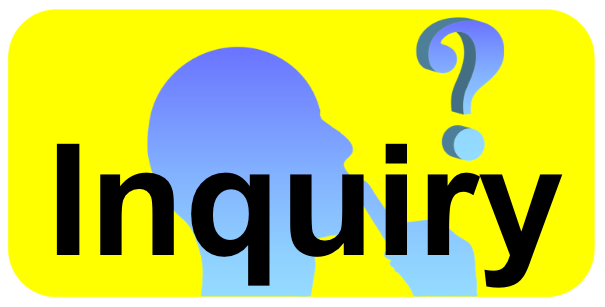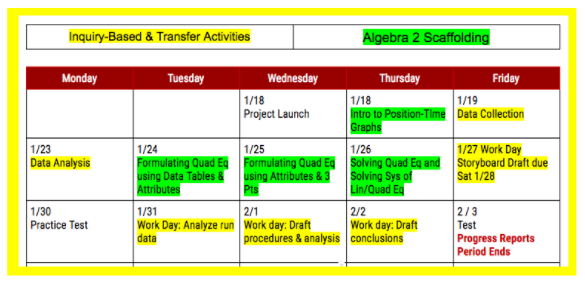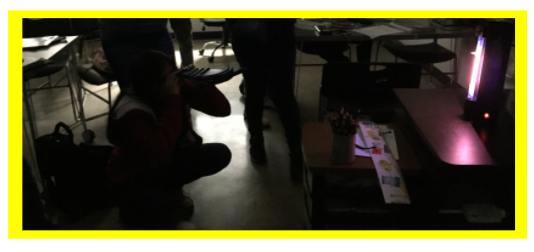Inquiry is formulating relevant questions to gain information and knowledge. Systems that leverage inquiry to build student engagement promote:
- Living Versions of Knows & Need-to-Knows lists
- Professional Work Cycles that Promote Inquiry
- Use of Student Observations / Data to Teach Abstract Concepts
- Use of Models to Explore Work Criteria
Living Versions of Knows & Need-to-Knows lists
K/NTK’s & Workshops
During project launches, students generate Know and Need-to-Know lists. Throughout the projects, teachers can promote inquiry by encouraging students to update their knows and need-to-knows prior to and after learning activities. Teachers can demonstrate that they value students’ need-to-knows by recognizing the need-to-knows they are planning to address in upcoming workshops and by designing special workshops in response to need-to-knows.
Entry / Exit Tickets
Another way to generate knows and need-to-knows is to use entry or exit tickets that ask students to write down on sticky notes things that are now clear to them as a result of an activity and things that continue to be muddy after the activity. For more related ideas, read this blog article.
Professional Work Cycles that Promote Inquiry
Professional Work Cycles
Professionals regularly use work cycles that promote inquiry. Examples include:
- Scientific Method – related website
- Engineering Design Process – related website
- Writing Process – related blog article
Teachers can use these processes to organize their project calendars around inquiry-based work cycles that are used by real professionals.
Use of Student Observations / Data to Teach Abstract Concepts
Data Collection Activities
Early in Dr. Trinidad’s Algebra 2 projects, students gather data related to the driving question. Later in the project, students learn methods to analyze this data and draw valid conclusions from it. The early data collection phase enables students to get engaged through hands-on experiences in the project. It also builds their intuition for the sizes of realistic solutions to the equations that model their project phenomena.
Hands-On Activities
Science teachers at CINGHS also use hands-on lessons to introduce and review abstract concepts. Prior to discussing quantum mechanics, student experienced the energy released in electron interactions by doing an emissions lab.
Following this lab, Dr. Trinidad facilitated an interactive workshop on wave particle duality.
Use of Models to Explore Work Criteria
Highlighting Model Work
Teachers can help students to apply inquiry in order to better understand high quality work by leading students through activities that have students examine and critique model products. In the highlighting activity below, students used a color-coded rubric and sample grant proposals to analyze grant segments that exemplified parts of the grant rubric. They highlighted each segment according to the section of the rubric it demonstrated. Then they added a number to each highlighted segment that corresponded to related rubric criteria.
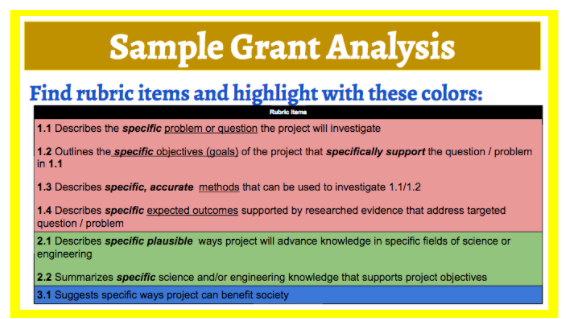 |
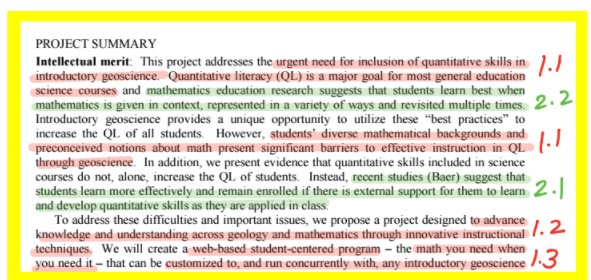 |
For more details on how to use model work to create lessons that examine product criteria, read this related blog article.
